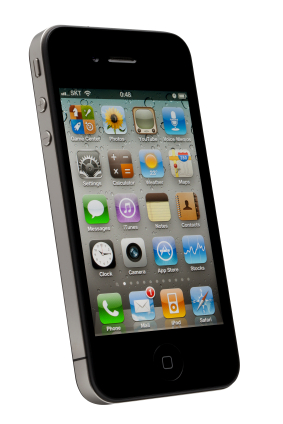Why One Selling Style is not Enough!
Selling is a fluid art, with some components that would make it seem as if it has its basis in science, yet we all know that is not true. Selling is a process. It has stages, and for many products and services it will always be necessary to have a human in the process as it depends on recognition of the customer, customer reaction, and intimacy.
_____________
A discussion about selling styles always makes for interesting banter. Just as soon as you figure out what your style should be, you reflect back on a sales call or situation and determine that you haven’t always acted within that character.
A Look at Some Styles
There are a number of selling styles that should be recognized. I would note that depending on what text you read you are sure to find countless interpretations and nuances of sales styles. I will stick to some conventional logic here in describing the styles I am referring to:
- Technical Sellers
- Relationship Seller
- Collaborative & Consultative Sellers
- Account Servicing Sellers
- Closers/Assertive Sellers
Which of these styles is for you? Which of these styles do you need to exhibit?
There is a good answer to this question…all of them!
Selling is situational. This is where the art becomes true to form. Sales professionals who sell in one style will limit their effectiveness to particular situations with particular types of buyers.
A Closer Look
The sales process generates some notable styles. This is not an endorsement of any of these styles as much as it is a cataloging of them so that the differences between them are known.
Technical Sellers – These individuals are considered experts, usually with a product that is complicated or technical. They know the product or service like no other, and know its applications from the company view and from the customer view.
Relationship Sellers – These sales professionals sell on the strength of a close, personal relationship with customers and prospective customers. Not everyone can do this, as it requires the right personality and attractions.
Collaborative and Consultative Sellers – This sales professional consults and collaborates with the buyer, outwardly looking for input and providing suggestions as to what could make his/her product fit the needs of the customers. They listen well and look for those things that they can agree on changing.
Account Servicing Sellers – These professionals spend their efforts proving their worth providing exceptional customer service and getting sales based on the confidence they have build with the customer.
Closers/Assertive Sellers – This group counts on the technical act of the sales process, particularly the close and aggressive sales manner to get accounts.
There are other types, yet these stand out.
You Need Them All!
I know that this statement intrigues you but we must recognize that although you may have a dominant style, each of the styles plays a rather important role in the sales process. Often, the buyer, and the buyer’s style determine the style that you use for the sale.
Example 1. Closer/Assertive Seller
A buyer is slow to make a decision in a complex sale. You can react by buying into that slowness or even ambivalence, or you can move to close at different impasses, forcing the buyer to disclose his/her objections. You move to being a closer/assertive seller. In this case, you changed your style to accommodate a buyer, and to accelerate the sales process. You move past the objections and consummate the sale.
Example 2. Technical Selling
Your product is technical in nature. Tolerances are tight, and even sophisticated users struggle with the specifications and requirements. You utilize your expertise to pull together all aspects of the features and benefits, and how they relate to the customer’s situation. Your competition is bringing in someone from another region to “explain” the product to the prospective buyer. Your advantage is that you are right here, and will be here when the competition’s expert goes home. Your emergence as the technical expert is what the customer needs to gain assurance and commit to the sale. You get the order.
Example 3. Relationship Seller
Inertia may be a physics law, yet it is sometimes difficult in the sales process unless you are the incumbent sales professional. You spend time with the prospective customer explaining the process, product, and pricing. You spend so much time that you get to know the customer’s needs better than the competition, and the incumbent. Your relationship is solid. You know the organization, its financial condition, and its projections for the future. Your customer data file is complete and you utilize the information to its fullest. When the incumbent makes a mistake or misstep, what sales professional is the logical choice? You close the deal.
Example 4. Collaborative and Consultative Seller
This sales professional acts as the business consultant to the buyer, while collaborating to come up with the best selling situation possible. You are involved in a sales situation with a buyer who has never purchased at this level. The size of this ticket, and the complexity of this sale, coupled with the gravity of this sale require you to be close to the buyer. It requires listening and “making the buyer look good.” You do so by asking questions, listening, and involving the buyer’s important personnel to determine the product specifications. You then use your ability to provide expert consultation to consummate the sale. You emerge the most sensible option.
Example 5. Account Servicing Seller
You are the Account Executive who has been servicing this account. You have teamed up with the sales professional on the account. Your responsiveness and your reputation are rock-solid with the buyer, and you can use that to get an order. You get involved in the specification and the quotation process, as no one knows the customer like you do. Your reputation of delivering is a primary factor in the customer believing in your organization. The customer continues the old order and awards your organization with more business.
In Summary
There is no doubt that these situations happen. Actually, the same individual can be involved in example 1 through 4. You need to find comfort in situational selling. Utilize the correct selling style for the situation. In the coming weeks we will touch on some of these.
Keep selling and stay flexible.
Your comments are welcome.
 March 23, 2015
|
Posted by Admin9!
March 23, 2015
|
Posted by Admin9!

 Categories:
Categories:  Tags:
Tags: 

Your Comments